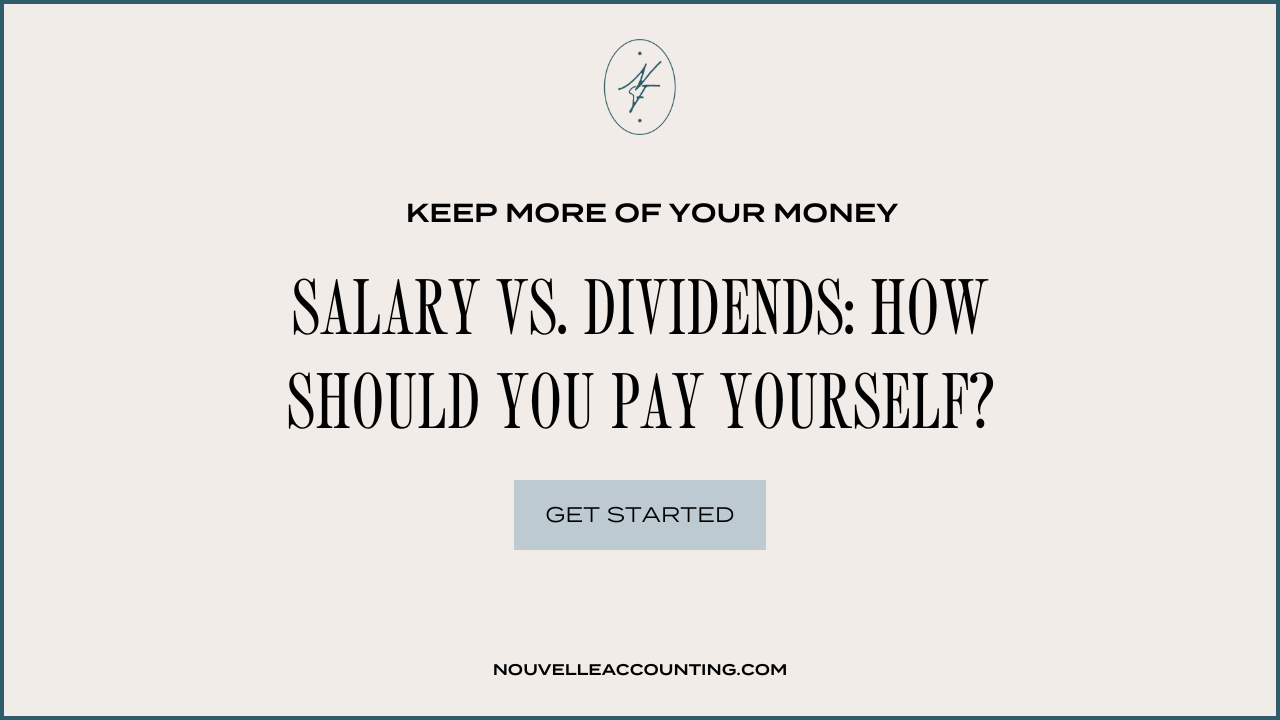
Understanding Canadian Tax Brackets
Today, we’re diving into the different tax brackets in Canada. Canada has a progressive tax system, meaning we pay different tax rates based on our income levels. These tax brackets—also known as tax rates—apply to both federal and provincial/territorial income taxes. If you earn money in Canada and file taxes, you're probably familiar with the term “tax brackets.”
Simply put, you get taxed at different rates depending on your income and where you live. While this is generally true, it’s a bit more nuanced than it might seem.
New Here?
I’m Amelia, a Toronto-based accountant dedicated to supporting women-owned businesses. My main purpose is to help you know your numbers, increase profits, and avoid mistakes when it comes to the numbers side of your biz.
Whether it’s taking it off your plate, helping you DIY with ease with my Sole Prop Starter Kit, or increasing your financial awareness—I’m here to make it simple.
Be sure to sign up for free monthly bookkeeping & tax reminders sent straight to your inbox to be sure you stay on track and never miss a deadline.
A Myth About Tax Brackets I Often Hear
A common concern we hear is, “I don’t want to make more money because I’ll move into a higher tax bracket.” The idea is that it won’t be worth it, or that all the extra money earned will just go straight to taxes.
There’s a lot of this kind of talk floating around in the business community, but it's not quite right. In this blog, we’ll break down how tax brackets actually work and explain why holding back on your income potential is never the way to go. Now, let's get started!
Part One: How Tax Brackets Work in Canada
Tax brackets are based on your total taxable income, which includes income from all sources, minus any eligible deductions. You’re taxed on your net income, which is your income after all eligible deductions. These deductions can vary from person to person and can get more complicated if you're a business owner.
Once you’ve claimed all the appropriate deductions, you’re left with your net income, which is then used to determine how much tax you’ll owe (more on that later).
In Canada, there are two types of taxes: federal and provincial. This means you pay taxes to both the federal government AND your provincial government. Federal tax rates are the same for everyone across Canada, while provincial tax rates vary depending on the province or territory.
You can find the individual tax rates published by the CRA here and corporation tax rates here.
Part Two: How the Marginal Tax Rate System Works
Let's continue with our example, hang in there! Once you've determined your net income, here’s how to calculate the taxes you owe.
For an Ontario resident earning $70,000 in net income, the first $51,446 is taxed at 5.05%. The remaining $18,554 falls into the next tax bracket and is taxed at 9.15%. Adding those two amounts together gives you the provincial tax owing.
As we mentioned earlier, the federal tax rate is the same for all Canadians. For federal taxes, the first $55,867 is taxed at 15%, and the remaining $14,133 is taxed at 20.5%. To find your total tax owing, you simply add the provincial tax to the federal tax. And just like that—you’ve got your tax bill for the year!
So, as you can see, when you earn more, your tax rate doesn’t apply to all of your income. It only affects the portion that pushes you into the next tax bracket, if there is one.
How to Avoid Leaving Money Behind:
Many people think, "If I earn more, I’ll just pay so much more in taxes, it won’t be worth it." But as we’ve shown, that’s not the case. The more you make, the more you get to keep. Yes, your tax bill may be higher, but having more income can actually work to your advantage. For example, that higher revenue can help when applying for bank loans, securing financing, or even selling your business.
-
Keep a close eye on all your expenses
-
Hold onto receipts to back up your write-offs
-
Claim your home office
-
Contribute to your RRSP
-
Don’t forget to claim business use of your vehicle
-
Ask your accountant about the benefits of incorporation
At its core, business tax is a portion of your profit that goes to the government. Think of it as a membership fee for the "Running a Business" club. Except this club's benefits include roads, schools, and not getting invaded by neighbouring countries.
Treat taxes like another business expense that you are budgeting for. Shift your mindset from trying to avoid taxes to understanding them and paying only what’s necessary.
What's Next?
Be sure to sign up for free monthly bookkeeping & tax reminders sent straight to your inbox to be sure you stay on track and never miss a deadline. Be sure to get your hands on my best selling Sole Prop Starter Kit today and start catching up your books.










